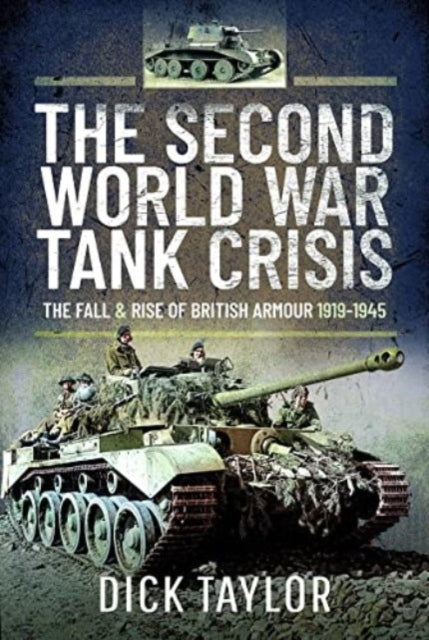The Second World War Tank Crisis
Usually shipped within 24 hours
UK deliveries from £5.95
Delivery & Returns
Delivery & Returns
We use the Royal Mail, DHL Express or UPS for our customers. For UK addresses, deliveries under 10kg are a standard £4.95 via Royal Mail Tracked 48 Service. For orders over 10kg and overseas customers, postage is calculated for you at checkout once you have entered your postal address. This price, does not include any potential custom charges that may apply, depending on the product or destination, as every country has very different import duties / taxes. Online exclusive products (such as trainers) will be delivered to you directly from the printer, separate from other items in your order, but your postage fee covers ALL items in your order.
If you are unhappy with your purchase, please email shop@tankmuseum.org within fourteen (14) working days of receiving your goods, and return it to us at the address below, in its original condition, unopened (with any seals and shrink-wrap intact) and we will issue you a full refund or replace it. Goods must be returned at your own cost. If the item is faulty, you do not need to return it, we will send you a replacement free of charge.
Description
Description
The Fall and Rise of British Tanks, 1919-1945
By Richard Taylor
Paperback
British Second World War tanks performed so badly that it is difficult to bring to mind any other British weapon of the period that provokes such a strong sense of failure. Unfortunately, many of the accusations appear to be true - British tanks were in many ways a disgrace.
But why was Britain, the country that invented them, consistently unable to field tanks of the required quality or quantity throughout the conflict? This perceived failure has taken on the status of a myth, but, like all myths, it should not be accepted at face value - it should be questioned and analysed.
And that is what Dick Taylor does in this closely researched and absorbing study. He looks at the flaws in British financial policy, tank doctrine, design, production and development before and throughout the war years which often had fatal consequences for the crews who were sent to fight and to be murdered' in mechanical abortions'. Their direct experience of the shortcomings of these machines is an important element of the story.
He also considers how British tanks compared to those of the opposition and contrasts tank production for the army with the production of aircraft for the RAF during the same period. His clear-sighted account goes on to explain how, later in the conflict, British tank design improved to the point where their tanks were in many ways superior to those of the Americans and Germans and how they then produced the Centurion which was one of the best main battle tanks of the post-war era.
![The Second World War Tank Crisis Book [variant_option4]](http://tankmuseumshop.org/cdn/shop/files/9781399003568.jpg?v=1748338285&width=1214)

![The Second World War Tank Crisis Book [variant_option4]](http://tankmuseumshop.org/cdn/shop/files/9781399003568.jpg?v=1748338285&width=88)
![Christmas Tank Museum Wrapping Paper - Two sheet pack Wrapping Paper [variant_option4]](http://tankmuseumshop.org/cdn/shop/files/DSC2318.jpg?v=1759225755&width=176)
![The Second World War Tank Crisis Book [variant_option4]](http://tankmuseumshop.org/cdn/shop/files/9781399003568.jpg?v=1748338285&width=640)



